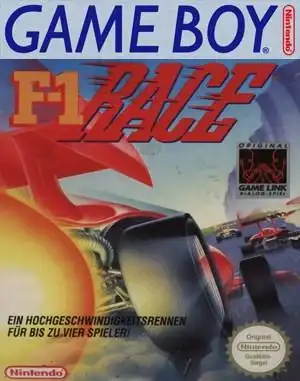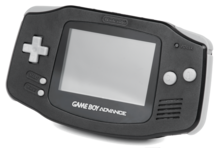Speed demons of the 80s and 90s, gather 'round! Before the slick 3D graphics and complex simulations of modern Formula One games, Nintendo gave us a taste of the Grand Prix circuit with a charming little title: F-1 Race. This wasn't just any early racer; it was a foundational step for Nintendo and even had a touch of future greatness behind the scenes.
Let's fire up the engines and take a trip back to the pixelated tracks of this classic.
The Famicom Original: A Dash for the Finish Line
Released way back in 1984 for the Famicom (Nintendo's Japanese console), the original F-1 Race was developed by HAL Laboratory. If that name rings a bell, it should – they're the folks behind Kirby and Smash Bros.!
The gameplay was pretty straightforward, echoing arcade racers like Pole Position. You'd race a Formula One-style car against the clock and rival cars (represented by different colors). The goal? Finish laps within a strict time limit to advance to the next track and score points.
- Simple Controls: Steering, acceleration, and a two-speed transmission (high/low gear) were all you needed.
- Time Crunch: The ticking clock was your main enemy. Finishing quickly was key to getting precious time extensions for the next stage.
- Punishing Mistakes: Skidding off course or colliding with other cars would slow you down significantly, often spelling doom for your race against time.
- Difficulty Levels: The game offered three difficulty settings, each featuring a different set of five tracks, providing a decent challenge for its era.
While simple by today's standards, that Famicom version captured the essence of high-speed racing and the pressure of beating the clock.
The Game Boy Evolution: Portable Racing with Friends
Fast forward to 1990 (or 1991 depending on your region), and F-1 Race got a significant upgrade for the brand-new Game Boy. This wasn't just a straight port; it was a reimagining.
- New Gameplay: The Game Boy version featured longer tracks, different mechanics like a speed boost, and the ability to powerslide around corners. Penalties for collisions were also less severe.
- Nintendo Cameos: Finishing races might even show you some familiar Nintendo faces cheering you on!
- Four-Player Fun: The most revolutionary addition was support for up to four players using the Game Boy Four Player Adapter. Imagine linking up four DMG bricks for a portable Grand Prix! That was seriously cool technology for the time.
The Game Boy version felt more like a complete, albeit still simple, racing game compared to the Famicom's arcade-like dash.
Satoru Iwata's Early Touch
Here's a cool piece of retro trivia: the lead programmer on the Famicom version of F-1 Race was none other than the late, great Satoru Iwata, who would later become the President of Nintendo. He reportedly loved racing games and found implementing the game's scrolling challenging but rewarding. It's fascinating to think of this early work influencing his perspective on game development.
Legacy and Influence
While not as famous as Super Mario Kart or F-Zero, F-1 Race holds a small but significant place in Nintendo's history. Iwata himself noted his work on the game influenced his later involvement in racing titles. You can see the seeds of Nintendo's approach to the genre – focusing on fun, accessibility, and unique mechanics – planted in this early title.
It paved the way for Nintendo to explore racing further, leading to the iconic franchises we know and love today.
Where Can You Relive the Race Today?
Getting your hands on the original cartridges might require some retro hunting. However, the Game Boy version has popped up on Nintendo's classic game services over the years, sometimes included in virtual console offerings or collections. Emulation is another route for experiencing these old gems, allowing you to preserve and play titles like F-1 Race on modern hardware.
Whether you played it on a bulky Famicom or squinted at the green-tinted Game Boy screen, F-1 Race offered a simple, fun, and challenging racing experience that helped set the stage for Nintendo's future dominance in the genre. It's a neat little piece of gaming history worth remembering.
Frequently Asked Questions
Q: Who developed F-1 Race? A: The Famicom version was developed by HAL Laboratory, while the Game Boy version was developed by Nintendo R&D1.
Q: Is F-1 Race related to the modern F1 games? A: No, the classic Nintendo game "F-1 Race" is not part of the official, licensed Formula 1 game series developed by companies like Codemasters or EA Sports today. It's a distinct retro title.
Q: What's the main difference between the Famicom and Game Boy versions? A: The Game Boy version has updated gameplay mechanics like speed boosts and powersliding, longer tracks, Nintendo character cameos, and notably, supports up to four players with an adapter, unlike the Famicom version.
Q: Was Satoru Iwata involved in F-1 Race? A: Yes, the late Satoru Iwata was the lead programmer for the original Famicom version of the game.


